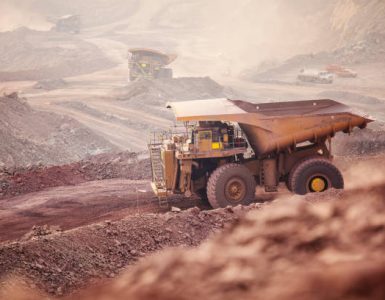A so-called “clean energy” initiative coming to the ballot box in November promises to dramatically reduce air pollution and improve respiratory health.
That may be stretching the truth. A lot.
Data from the federal Environmental Protection Agency (EPA) and Arizona Department of Environmental Quality (ADEQ) show that most air pollution comes from vehicles while pollution from non-vehicle sources has declined dramatically since the 1990s.
The initiative, called Proposition 127 would change the state constitution to mandate that utilities produce half of all their retail sales from renewable energy sources by 2030.
Utilities warn that if it passes, they will be forced to front billions of dollars to meet the deadline. They said they also will be forced to raise electric rates.
If it succeeds, the impact on air quality would be “negligible” in areas of the state where most people live, says Washington D.C.-based NERA Economic Consulting that was commissioned by Arizona Public Service to analyze emissions in the Phoenix area.
Arizona already is a leader in renewable energy and ranks #3 nationally in terms of installed solar capacity, according to the Solar Energy Industries Association (SEIA). The state’s energy mix is approximately 50 percent clean, including solar, wind, hydro-electric and nuclear.
In the past decade, Arizona utilities have invested significantly in the deployment renewable energy, installed cleaner and more efficient technology, and closed targeted fossil-fuel plants to comply with strict state and federal regulations.
One example is Tucson Electric Power (TEP) that has been heavily investing in solar and wind power and energy storage systems. It’s pursuing plans to install ten efficient new natural gas units that will help reduce NOx emissions at its largest Tucson plant by about 60 percent, or 300 tons, per year, said Joseph Barrios, TEP spokesman.
TEP has been able to realize a 14 percent reduction in total CO2 emissions through diversification efforts since 2005, and is targeting an approximate 50 percent reduction in CO2 emissions from coal generation by 2032.
These and other actions by utilities and regulatory agencies in Arizona speak for themselves.
While carbon dioxide (CO2) emissions have continued to increase, they come largely from vehicle emissions, the EPA says. “Highway driving” is the top source of air pollution in most Arizona counties, according to ADEQ.
In contrast, emissions from other pollutants have dropped 62 percent since the 1990s –even though the state’s population grew 86 percent and gross domestic product rose 312 percent during that same timeframe, ADEQ data show.
There appears to be little evidence to prove the claims of the group and billionaire Tom Steyer who are pushing Prop. 127, opponents said.
The NERA analysis, which analyzed emissions data in the Phoenix area, says that passage of the initiative “has almost no prospect of altering whether Arizona’s air is deemed safe from a public health perspective.”
“The changes in ozone estimated to result from the initiative are also so small in absolute terms that they will not affect numbers of emergency room visits for asthma or other illness on high ozone days to any measurable degree,” the report says.
The study also says that:
- Emissions from coal-fired power plants across Arizona are “miniscule” contributors to ground-level ozone in metro Phoenix, accounting for an estimated .7 percent of total ozone;
- Passage of the initiative regulations “may have no effect at all on Phoenix’s ability to meet EPA’s air pollution health standard”; and
- Air quality in the Phoenix area could decline if utilities are forced to rely more heavily on gas plants to replace nuclear at Palo Verde Generation Station.
Palo Verde is the nation’s largest source of carbon-free electricity, and accounts for more than 70 percent of all clean energy generated in Arizona.
As proponents of Proposition 127 push their agenda, Donald Trump’s administration has made shoring up existing nuclear power plants and advancing a new generation of nuclear reactor technology a key part of its energy policy to reduce carbon emissions. Trump signed the Nuclear Energy Innovation Capabilities Act (NEICA) in August that is expected to speed up the development of advanced reactors.
The nonprofit and nonpartisan Center for Climate and Energy Solutions (C2ES) in Arlington, Va. stated that NEICA is a small but important step in accelerating the rate of decarbonization in the United States.
“Advanced reactors can dependably generate zero-emission electricity and useful heat, and they are scalable to produce large quantities of energy from a very small footprint,” C2ES President Bob Perciasepe said in a written statement. “New designs hold the promise of being more affordable, even safer, and are expected to produce less waste than the current generation of reactors.”
















Add comment